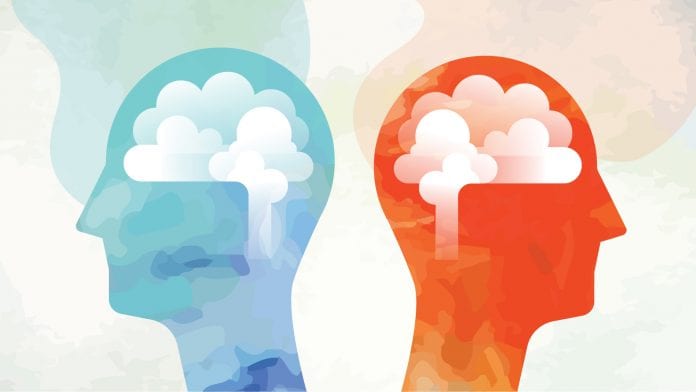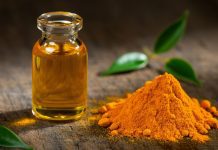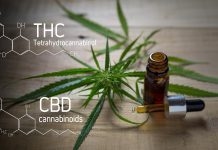
Dr Ilya Reznik discusses the use of cannabinoid-based medicines for neuropsychiatric disorders and the barriers to prescribing CBD.
Dr Ilya Reznik has published many original papers (including controlled trials), reviews and case reports in leading peer reviewed journals in the fields of clinical psychiatry and neuropsychopharmacology.
Dr Ilya Reznik’s current main interest is in the field of the medical use of cannabis and cannabinoids, especially for various neuropsychiatric illnesses, such as chronic pain syndrome, post-traumatic stress disorder (PTSD), OCD, Tourette syndrome, Parkinson’s and Alzheimer’s diseases. Dr Ilya Reznik also co-ordinates the activity of Israel National Forum/Association for Medical Cannabis Research and Treatment; and in 2013 was elected to the Board of Directors at the International Association for Cannabinoid Medicines (IACM).
Medical Cannabis Network spoke to Dr Ilya Reznik in Dublin on the sidelines of the Europe Canna Expo, Europe’s premier event series dedicated to cannabinoids and medical cannabis, to discuss areas including the use of cannabinoid-based medicines for neuropsychiatric disorders and some of the barriers to prescribing.
What are the most significant neuropsychiatric applications of medicinal cannabis?
I am a specialist in cannabinoid medicine, and we are looking for the ways in which cannabis as a plant and its derivatives can influence human subjects with regard to helping them with a medical condition. As a neuropsychiatrist, I am interested in how cannabis can influence a neuropsychiatric condition such as epilepsy.
As a medicine, cannabis’s most significant effects are neurological and psychiatric – although, of course, it can also be used to help treat pain, particularly for cancer patients. And cannabis and its derivatives are most widely used to help treat neuropsychiatric conditions like head trauma, post-traumatic stress disorder, Tourette syndrome, epilepsy; as well as neurodegenerative disorders like Alzheimer’s and Parkinson’s.
What benefits has cannabis shown in the treatment of elderly patients?
Most elderly patients are not being treated because they have a neurodegenerative disorder, but just because they are elderly; and so, within the natural course of their lives they have developed a particular problem such as diabetes, high blood pressure, and so on. Most also have experienced a lot of pain stemming from conditions such as arthritis. We therefore look at how we can help them in a general sense, and to do this I will typically look at three areas.
The first area is recreational – whether people are taking cannabis recreationally. The second is medicinal – do they have an identifiable medical disorder? If so, we can decide how we are going to treat it. And the third is wellbeing. But the borders between each of these three areas are not absolute, and there is a lot of overlap from one to the next. For instance, we may be able to have an impact on a person’s wellbeing by treating their medical condition.
Cannabis is a very unspecific substance; it has many different components and each one does something different in the endocannabinoid system of the human body. The variety is so large that we will probably never have conclusive studies. But we do know that when a person takes cannabis as a medicine, they can experience more than one effect.
Because of this variety of effects, is there a clear need for a personalised medicine approach?
Cannabinoid medicine is a prime model for personalised medicine. Sometimes industry doesn’t like that; they want to use the same molecules for everyone, and while that might work with regard to medicinal cannabis, it will also mean that some parts of the population won’t see a benefit.
What are the key challenges currently facing doctors who wish to prescribe cannabis and its derivatives to their patients?
It is important to look at the step before prescribing. The main challenge for cannabinoid medicine is the level of resistance within the community of doctors. For 80 years, clinicians have been taught to see cannabis as a dangerous narcotic drug.
As such, we need to keep this traditional approach in mind; the largest resistance to cannabis is not on the part of lawmakers but the doctors. That is the biggest barrier to cannabis as a medicine at the moment – and that tends to be because doctors have not been educated on the benefits of the plant, and so we need a common movement, a bottom-up approach from doctors like me who take it upon themselves to get educated and to educate other doctors. But a top-down approach is also required, whereby cannabis is approved as a medicine – such as Sativex, which is FDA and EMA approved. Clinicians will, I believe, come to accept medicines such as Sativex because it has been approved. But it will take time.
Should the endocannabinoid system be included in the education programmes for new clinicians?
For the last 10 years, the textbooks being used in medical schools have not been changed, and these texts do not include a description of the endocannabinoid system. As such, we cannot even expect clinicians to be aware of it.
Are there any side effects or safety issues with medical cannabis which patients may not know about?
We should be aware of our abilities to enjoy or be harmed by the many different things we will encounter in our lives. For instance, we know not to cross the street without looking for traffic first or we may be hit by a car. Our safety there is our own responsibility. And the same should be true when we make the decision to use something like cannabis.
I have prescribed cannabis to young women who suffered both pain, depression and PTSD: they were lucky enough to be granted the licence; and they benefited from the medicine and went on to have get married and then became pregnant, at which time the Israeli government asked us to stop prescribing them cannabis because they were pregnant.
I am a member of our parliamentary committee for cannabis regulation and I asked the lawmakers not to stop their treatment, because if they did then it was highly likely that the patients would resort to sourcing cannabis on the black market; which will not only be funding crime but will also mean that the cannabis they are using will be of a low quality. I asked the government to make it so that the responsibility of the health of the unborn child rested with the parent. They could be told of the risks associated with continuing to take cannabis while pregnant, and so if they made the decision to continue to do so then the responsibility rested with them, and not with the doctors or the government.
The same is true for children. We should not be able to say that children cannot access medicinal cannabis just because of their age when there are numerous patients, not least those with severe epilepsy, who can benefit considerably from taking CBD.
The point here is that we need to weigh the consequences and the benefits, and not take a one size fits all approach. We need to look at things on a case-by-case basis.
How should clinicians therefore educate themselves further in order to best support patients who may benefit from medical cannabis?
This is a very interesting question. Many doctors don’t work with all the tools that they have available to them. They will tend to reach for the method or tool that has worked for them in the past and which they are familiar with. I consider cannabinoid-based medicine to be a complementary medicine: it is not a mainstream medicine and probably never will be. Currently, cannabinoid-based medicine is adjunctive; and so, the majority of patients that I have with PTSD continue their conventional medicine in addition to cannabis-based treatment, but others are able to stop taking that and take CBD instead.
Doctors who would like to practise complementary medicine need to know how and when it can be used. Of course, some will not practise complementary medicine at all and will only use traditional methods and will therefore never learn about cannabinoid-based medicine; but others, like myself, will see it for what it is – potentially the best medicine that we have at our disposal – and we will prescribe it when we feel it will have a benefit. Then the remaining 80% or so of clinicians will take a middle position – they may become interested in it and they may also see it as a way of boosting their careers.
We have a lot to do moving forwards, but I think we should realise that what we are doing now is a part of history; we are making history. In the future, when people look back on the history of cannabis as a medicine, they will remember conferences like the one we are at today as being integral in the changes that were made in the medical landscape.
Dr Ilya Reznik
Chief Physician
Medical Institute for Forensic & Diagnostic Neuropsychiatry
MaReNa Diagnostic and Consulting Centre
This article appeared in the second issue of Medical Cannabis Network which is out now. Click here to get your free subscription today.








Is there any course on cannabis medicine for doctors.